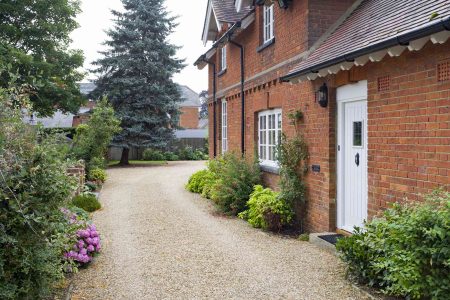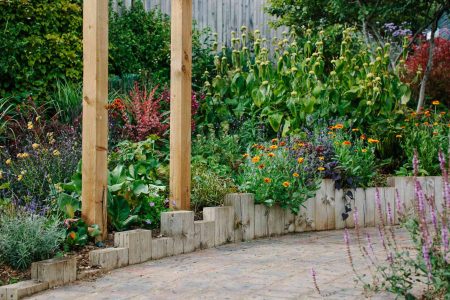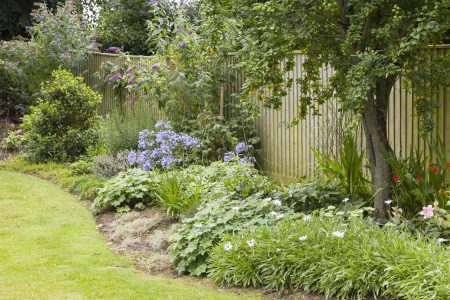Areas of a lawn can become uneven over time, due to settling, drainage issues, and various natural and unnatural causes. In the least extreme cases, you can solve the problem by topdressing with a thin layer of leveling mix (soil, compost, and sand). This is a good solution for widespread unevenness that does not run too deep. More extensive variation in level may require multiple applications of topdressing or, in more extreme cases, filling in deep depressions with soil and reseeding over the filled areas. If unevenness appears near water pipes, along with drainage issues, consult a professional—you might have a damaged pipe causing the issues.
One trick for leveling small depressions or holes covered with healthy grass is to cut out a patch of the turf and add the soil mix underneath it, then lay the patch back down. Known as sweeping under the carpet, this is a handy technique for leveling localized depressions without having the unsightliness of exposed soil on the grass, which happens with the other methods.
Whichever method you choose, spring is the best time to level your lawn, as the conditions are mild, giving the lawn a chance to recuperate before summer’s heat arrives.
Minor Leveling With Topdressing
Topdressing involves spreading a leveling mix of topsoil, compost, and fine sand. The soil should not contain mulch or plant debris, which can smother the grass. The best sand to use is play sand, which you can buy at any home center. A typical mixture is 40 percent sand, 40 percent topsoil, and 20 percent compost. The sand provides good drainage, while the compost adds nutrients to the soil to promote grass growth.
- Mix a batch of leveling mix in a wheelbarrow or tub, using a shovel. Mix well so the sand and compost are fully blended with the soil.
- Apply up to 1/2 inch of leveling mix on top of the low areas. Do not add more than 1/2 inch because this can smother the grass.
- Rake the topdressing to spread it out evenly.
- Brush the grass back and forth with a push broom to work the leveling mix down while lifting the grass blades up. The grass cannot thrive if it’s covered with soil.
- Water the area lightly, as needed. Avoid over-watering, which can wash away the leveling mix.
- Monitor the progress in the area. Eventually, you should see just grass and no dirt (assuming there were no bare spots before you began the process of topdressing). If the lawn is still uneven, repeat the topdressing process—applying no more than 1/2 inch at a time—until it is level.
Sweeping the Dirt Under the Carpet
This technique is so named because you are essentially picking up turf (the carpet) and putting dirt under it. It is suitable only for small sunken areas that are covered with healthy grass.
- Cut through the turf along the edges of the sunken area, using a flat spade, manual lawn edger, or sod cutter. Make clean, vertical cuts to minimize root damage and to form a neat patch of turf.
- Carefully remove the turf patch, making sure not to damage the roots, and set it aside.
- Spread a layer of debris-free topsoil or potting soil into the hole—enough to bring the turf patch level with the surrounding lawn. As you work, water the soil lightly to remove air pockets; this helps to prevent future settling.
- Replace the turf patch, pressing the grass back into place with your hand or foot.
- Water the grass.
- Monitor the patch carefully, and water as needed to keep the grass healthy. It needs extra care to recover from the stress of being removed.
Leveling Deeply Sunken Lawn Areas
If you have depressions, troughs, or holes that are deeper than 1 or 2 inches, you’re usually better off filling them with a good soil mix and starting over with new grass seed. Bringing up deeply sunken areas with topdressing takes too many applications, and you’ll spend more time trying to keep the grass alive than you will getting new grass to grow.
The trick to filling deep holes is to compact the soil gently and give it some water to settle it as you fill up the hole. If you simply pile on some loose dirt and plant your seed, the soil will settle, and you’ll be left with sunken area covered with nice, new grass. Walking on the soil is enough to compact it. Don’t compact the top-most soil where you will sow the grass seed. Prepare the soil and seed the area following the seed product instructions.
Read the full article here














